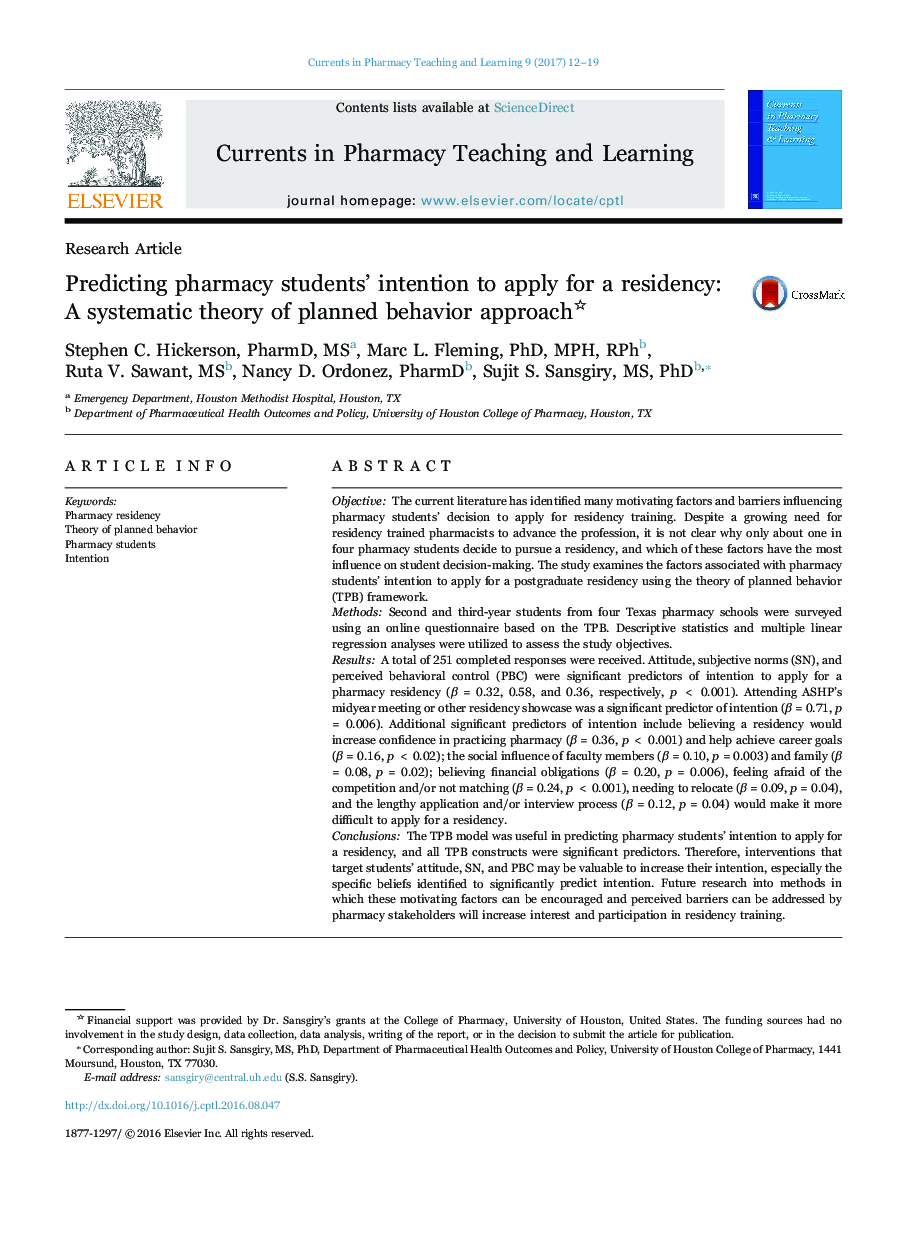| کد مقاله | کد نشریه | سال انتشار | مقاله انگلیسی | نسخه تمام متن |
|---|---|---|---|---|
| 4938099 | 1363630 | 2017 | 8 صفحه PDF | دانلود رایگان |
ObjectiveThe current literature has identified many motivating factors and barriers influencing pharmacy students' decision to apply for residency training. Despite a growing need for residency trained pharmacists to advance the profession, it is not clear why only about one in four pharmacy students decide to pursue a residency, and which of these factors have the most influence on student decision-making. The study examines the factors associated with pharmacy students' intention to apply for a postgraduate residency using the theory of planned behavior (TPB) framework.MethodsSecond and third-year students from four Texas pharmacy schools were surveyed using an online questionnaire based on the TPB. Descriptive statistics and multiple linear regression analyses were utilized to assess the study objectives.ResultsA total of 251 completed responses were received. Attitude, subjective norms (SN), and perceived behavioral control (PBC) were significant predictors of intention to apply for a pharmacy residency (β = 0.32, 0.58, and 0.36, respectively, p < 0.001). Attending ASHP's midyear meeting or other residency showcase was a significant predictor of intention (β = 0.71, p = 0.006). Additional significant predictors of intention include believing a residency would increase confidence in practicing pharmacy (β = 0.36, p < 0.001) and help achieve career goals (β = 0.16, p < 0.02); the social influence of faculty members (β = 0.10, p = 0.003) and family (β = 0.08, p = 0.02); believing financial obligations (β = 0.20, p = 0.006), feeling afraid of the competition and/or not matching (β = 0.24, p < 0.001), needing to relocate (β = 0.09, p = 0.04), and the lengthy application and/or interview process (β = 0.12, p = 0.04) would make it more difficult to apply for a residency.ConclusionsThe TPB model was useful in predicting pharmacy students' intention to apply for a residency, and all TPB constructs were significant predictors. Therefore, interventions that target students' attitude, SN, and PBC may be valuable to increase their intention, especially the specific beliefs identified to significantly predict intention. Future research into methods in which these motivating factors can be encouraged and perceived barriers can be addressed by pharmacy stakeholders will increase interest and participation in residency training.
Journal: Currents in Pharmacy Teaching and Learning - Volume 9, Issue 1, JanuaryâFebruary 2017, Pages 12-19
